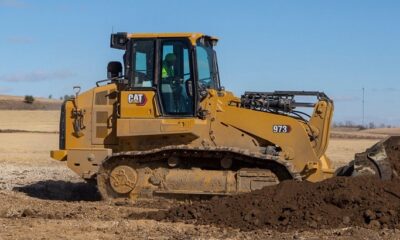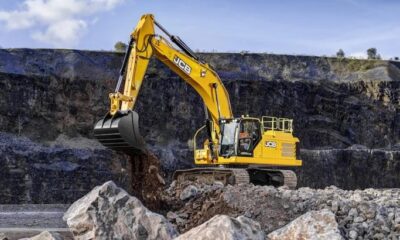Heavy Equipment
35 Must-Know Construction Equipment Names
A quick overview of 35 popular types of construction machines.
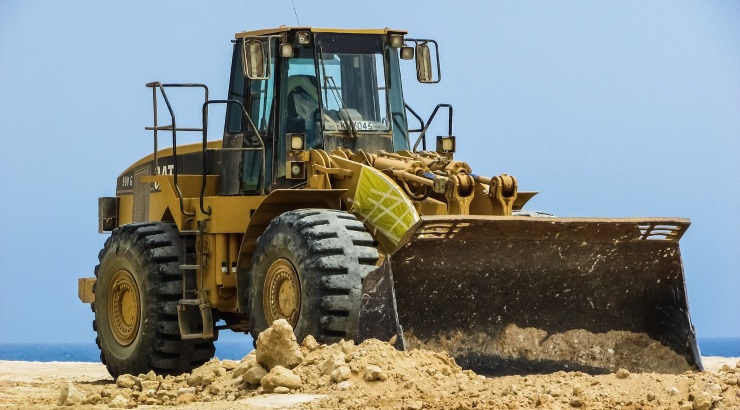
Construction equipment, often referred to as heavy construction equipment, are heavy duty machines that undertake earthwork and other massive operations at a construction site.
Heavy construction equipment
There are many types of equipments in construction projects, ranging from small-scale residential endeavors to large-scale commercial and infrastructure developments.
These heavy equipments play a crucial role in ensuring the efficiency and success of various tasks, including excavation, lifting, and other essential activities.
From bulldozers to motor graders and telescopic handlers, here are 35 most popular types of construction equipment.
1. Bulldozers
Also referred to as dozer, a bulldozer is a powerful tractor that is mainly used for pushing large piles of rocks, debris or other such materials at a construction or demolition site.
A large metal plate (dozer blade) is mounted on the front of the tractor to push materials during construction operations. The rear of the tractor is usually fitted with a device known as ripper, which is used to loosen tightly compacted materials.
Bulldozers can either be a four-wheel-drive tractor or a device mounted on continuous metal treads to navigate even the roughest terrains.
2. Motor Grader
Motor grader, one of the most popular equipment in construction, is a heavy-duty machine used in roadworks to create flat surfaces for asphalt to be spread on.
Motor graders are generally classified into two depending on their frame arrangements. These classes are rigid frame motor grader, and articulated frame motor grader.
The former consists of a single axle and is unable to turn right or left about a point on the axle, while the latter is fitted with a hinge in between the front and the rear axle – enabling it to operate in small spaces.
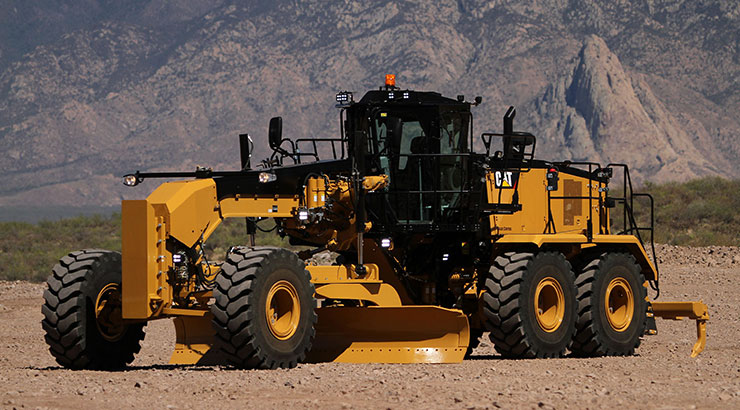
3. Asphalt Mixing Plant
Asphalt mixing plant is a construction machine used to create asphalt concrete and other forms of coated road-stone used in road building projects.
It combines mineral aggregates, sand and filler – in accurate quantities, heats the mixture and then coats it with a binder. The plant keeps the product heated to avoid setting before its placement on road.
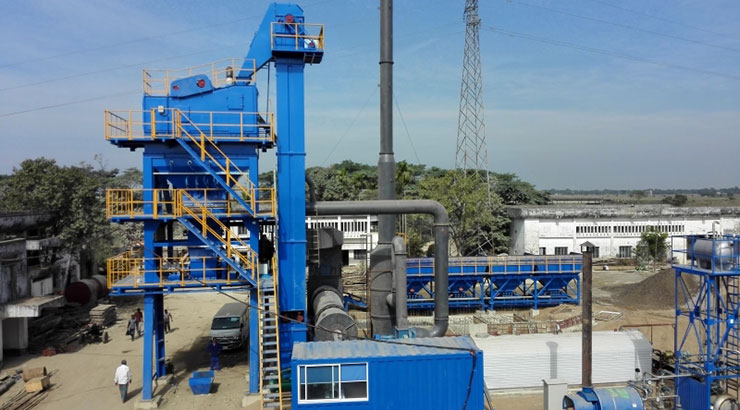
4. Asphalt Paver
Asphalt paver is one of the most common heavy equipments for construction. It is used for laying asphalt on the surface of a road or other such facilities.
Once asphalt has been prepared it is loaded into a dump truck which is then added to the paver’s hopper.
The conveyor then moves the asphalt from the hopper to the auger, which places a mound of asphalt in front of a screed. The screed then spreads the asphalt across the road and runs initial compaction.
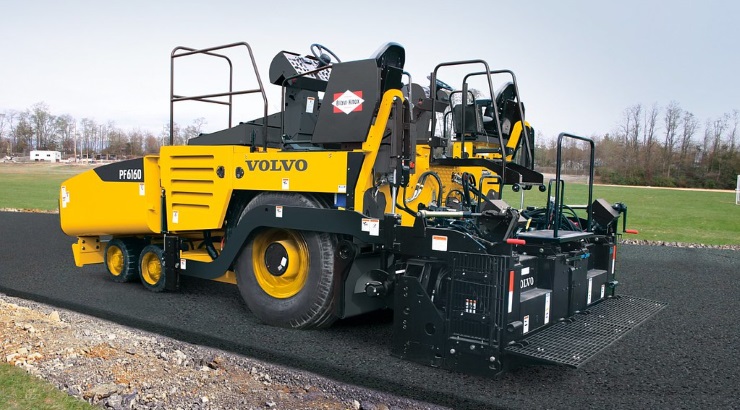
5. Telehandlers
Also known as telescopic handler, this is a multi-purpose lifting machine that is mainly used in the building and construction sector. It is commonly used for lifting heavy loads to high floors of buildings.
Most modern telehandlers are fitted with telescopic booms with variations of lifting apparatus and attachments – mostly bucket or bucket grab – to perform relevant operations.
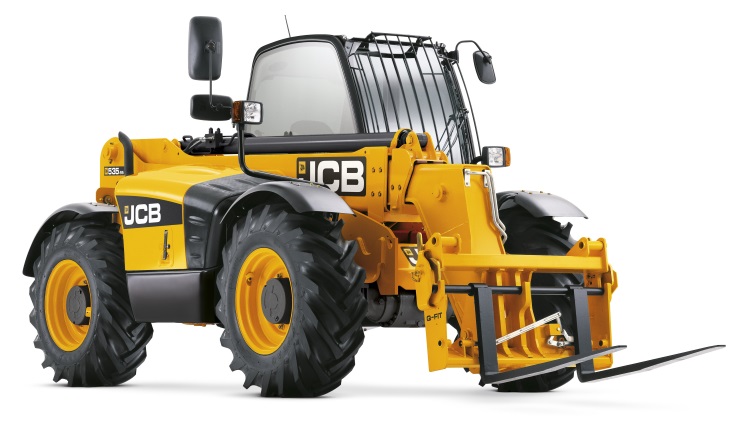
6. Dump Trucks
Dump trucks, also known as tipper trucks or damper trucks are heavy commercial vehicles used for moving dumps (landfills such as sand, gravel, or demolition debris) from one point to another.
These trucks are equipped with an open-box bed that is fixed at the rear and fitted with hydraulic rams to lift the front to allow the dump in the bed to be dumped behind the vehicle at the location of delivery.
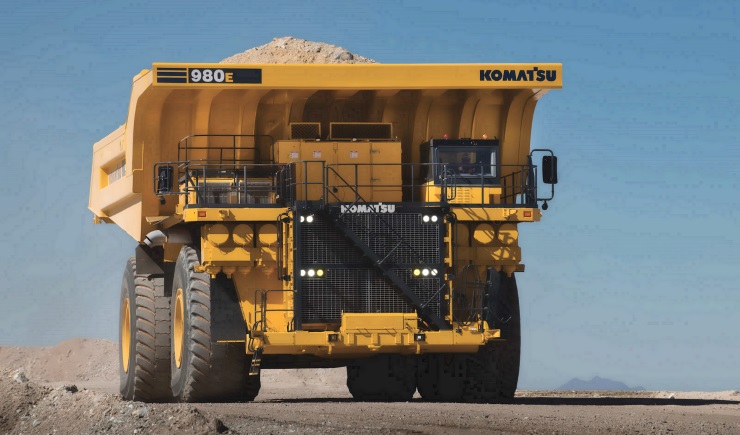
7. Excavator
Also referred to as diggers, excavators are heavy construction machineries used for excavating earth and rocks and loading them onto dump trucks.
Excavators have a boom, bucket and cab on a rotating platform above an undercarriage with wheels or tracks. They can handle a wide range of works by changing the front attachment, which makes them a popular type of heavy equipment for construction.
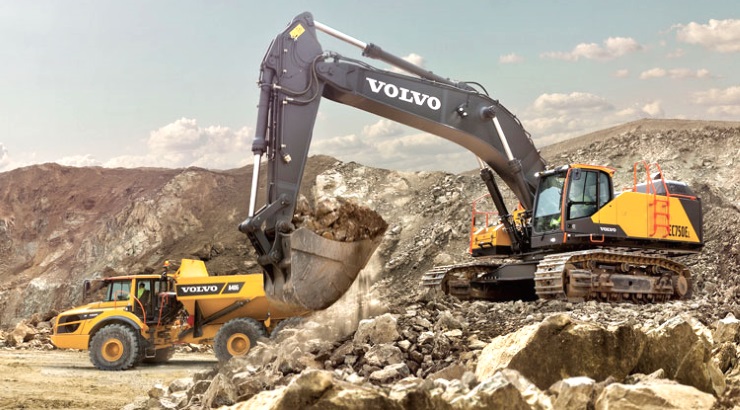
8. Road Roller Machine
Also known as roller-compactor, a road roller is basically a compactor type engineering vehicle that is used to press down soil, gravel, concrete, or asphalt in the construction of roads and foundations.
The machines can be rubber tire rollers, double-drum asphalt rollers or combination rollers and the type of roller used is determined by the mixture used in a road project.
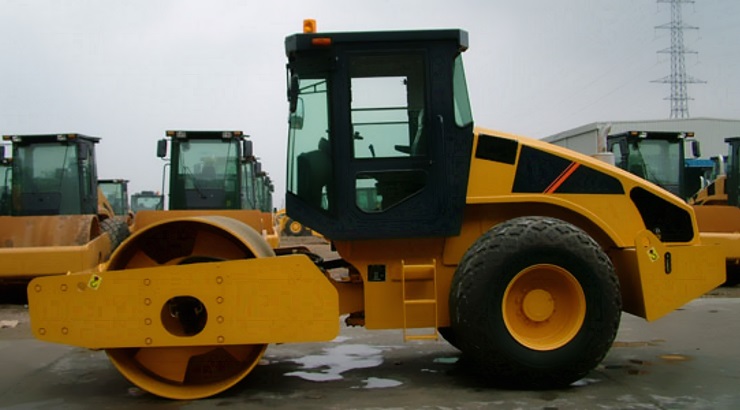
9. Wheel Loader
A wheel loader, also known as bucket loader, front loader, or skip loader is a type of tractor used to move a pile of material from the ground and load it onto a truck or into a pit.
It is one of the most mentioned construction equipment names as the machine is almost present in every construction site – whether large or small.
RELATED: Cat 995 Wheel Loader Roars with Unmatched Power
It consists of a front-mounted square bucket, joined to the end of two arms, used to scoop up material from the ground without spreading it out.
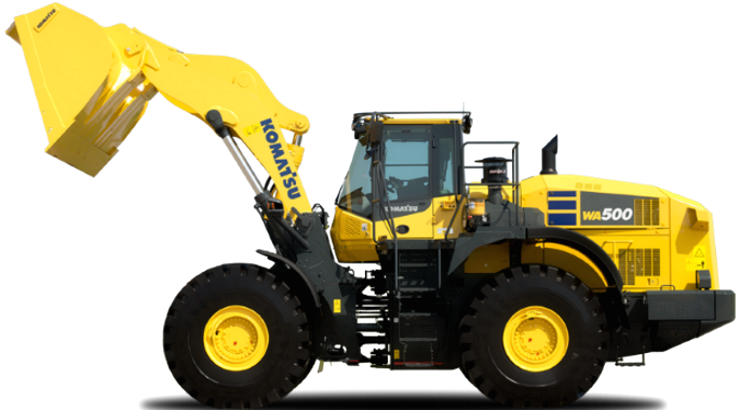
10. Truck Crane
As the name suggests, a truck crane is a modified truck that is fitted with a self-propelled crane for lifting, lowering, and transporting materials at a construction site.
The machine consists of two main components: the lower component – comprising the undercarriage or chassis, and the upper component – made up of the lifting crane.
The two components are connected through a turntable that allows the upper part to revolve about 180 degrees for most cranes, and a full 360 degrees for the more refined cranes.
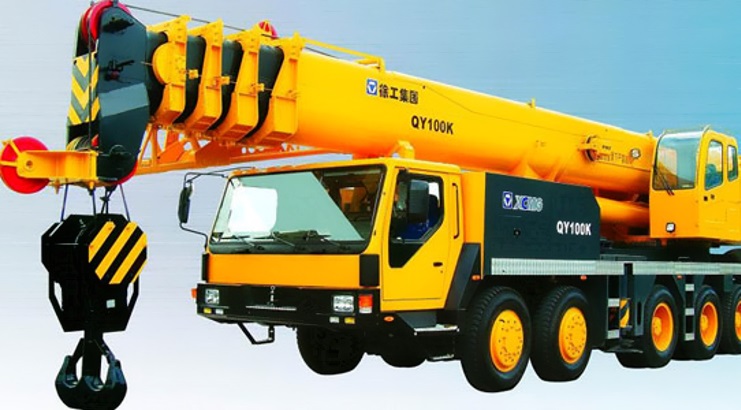
11. Forklift
This is an industrial vehicle with an attached platform that can be lowered to pick an object on or below the ground and raised to move the object in factories and construction sites.
Despite rarely making the list of popular construction machines, forklifts have recently undergone substantial modifications to increase their uses as construction equipment.
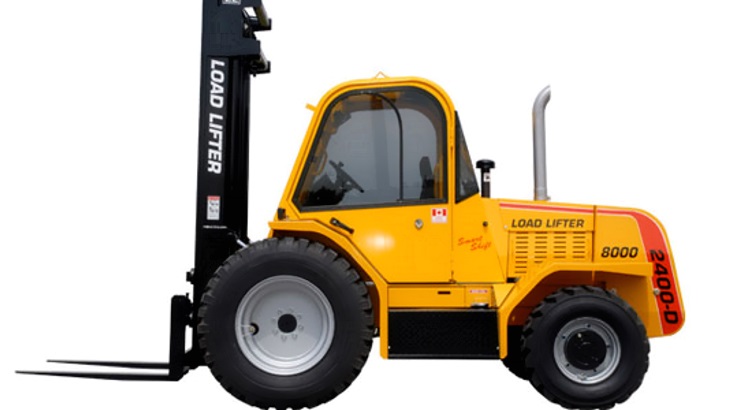
12. Backhoe
Also known as diggers, backhoes are often confused with excavators since the two have similar digging and lifting capabilities. However, they differ in size and functionality.
While excavators are huge machines with buckets and booms that rotate 360 degrees, backhoes are small tractor-like machines that can only rotate 200 degrees side to side.
A backhoe’s front and back buckets can dig up materials and load waste onto trucks.
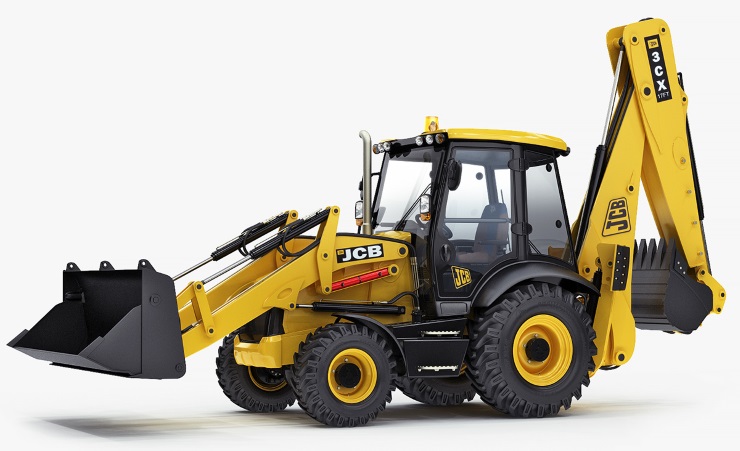
13. Pile Boring Machine
Pile boring machine is used to make vertical holes in a construction site to install precast piles for skyscrapers and other gigantic industrial complexes that require deep foundations.
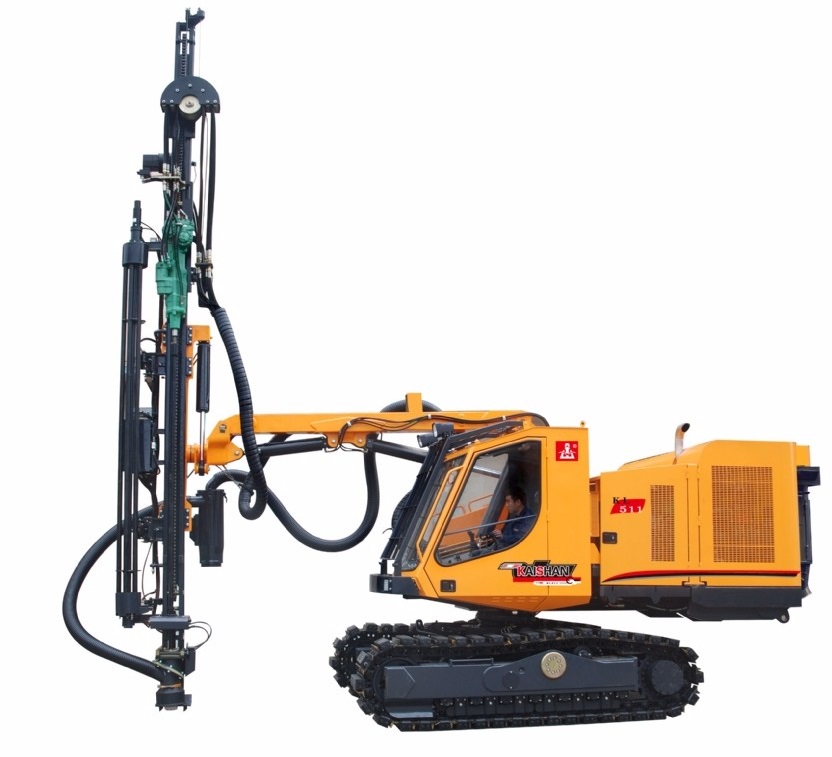
14. Pile Driving Machine
A pile driving machine, also known as pile driver, is used in construction to install pile (a braced, structural column) into the ground without first excavating the site — in a process known as pile driving.
RELATED: The 7 Most Powerful Road Construction Equipment
The machine lifts the pile, holds it in position and pushes it into the ground until it reaches the required depth. This is achieved through the use of weights placed above the pile.
When the weight is raised to its highest using hydraulics, or diesel, it is released suddenly – hitting and pushing the pile into the ground.
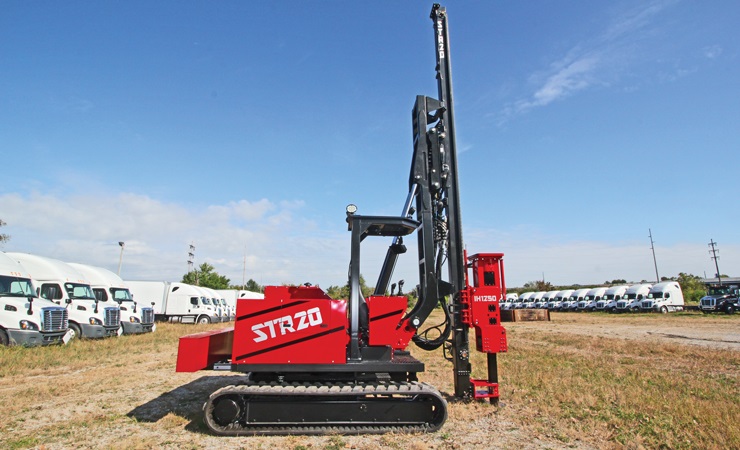
15. Wheel Tractor Scraper
This is a heavy duty machine used for construction, mining, and other earthmoving operations. The rear part of the equipment is fitted with a vertically moveable hopper with a sharp horizontal front edge that can be hydraulically raised or lowered.
When the hopper is lowered, the sharp front edge cuts into the earth and fills the hopper with soil, after which it is raised and closed with a vertical blade – known as apron.
The wheel tractor scraper then transports the load to a delivery site where the apron is raised, and the back panel of the hopper pushed forward to empty the scraper.
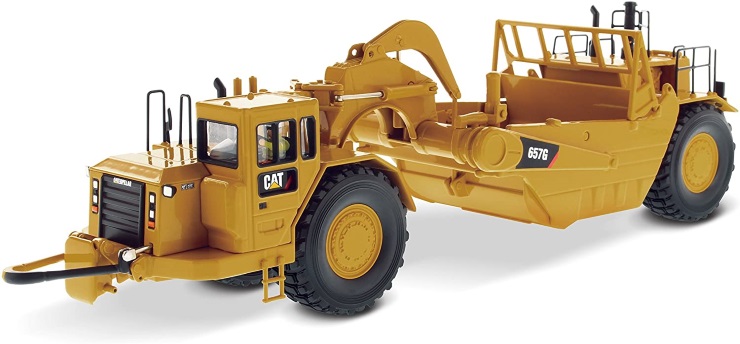
16. Feller Bunchers
Though rarely featured in lists of heavy machinery in construction, feller bunchers are used to simplify work for builders by harvesting and gathering trees at one place to allow easier transportation of logs.
A feller buncher is basically a vehicle with an accessory that can quickly cut several trees and place them together in readiness for transportation to a construction site for processing.
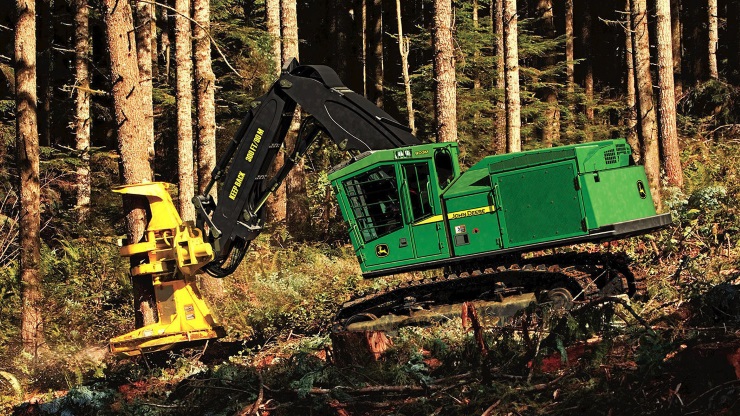
17. Concrete Mixer
A concrete mixer (cement mixer) is a special truck designed to mix concrete and ship it to a construction site. The trucks are often filled with dry materials and water, with mixing happening during delivery.
Alternatively, the vehicles can be loaded with material that has already been mixed at a plant. Concrete mixers are able to maintain the mixture’s liquid state through turning of the container until delivery.
Note: Portable concrete mixers can also be used to make concrete at a construction site.
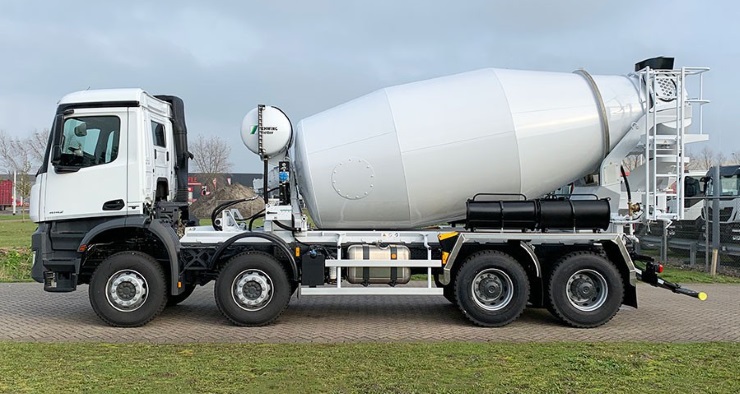
18. Concrete Pump
This is a machine used for pumping liquid concrete at construction sites. There are two types of concrete pumps: boom concrete pump, and line pump (trailer-mounted) concrete pump.
A boom concrete pump uses a remote-controlled articulating robotic arm (boom) to pump and place concrete at defined locations.
These pumps are commonly used in large construction sites due to their ability to pump high volumes of concrete and because of the labour saving features of the placing boom.
On the other hand, line pumps that are mostly mounted on trucks require hoses to be connected together and lead to the spot where concrete needs to be placed. They normally pump lower volumes of concrete hence not ideal for large construction projects.
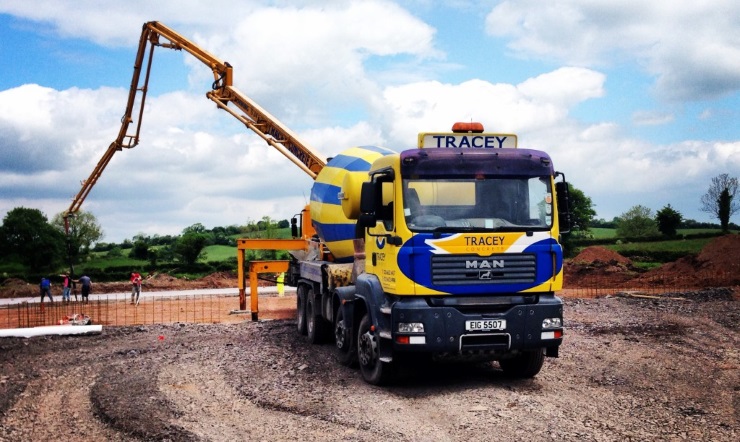
19. Pipe Layer
This is a type of a construction vehicle used to lay pipes.
Pipe layers play a critical role in the laying of the world’s numerous pipelines – lifting and positioning pipes and lowering them into channels.
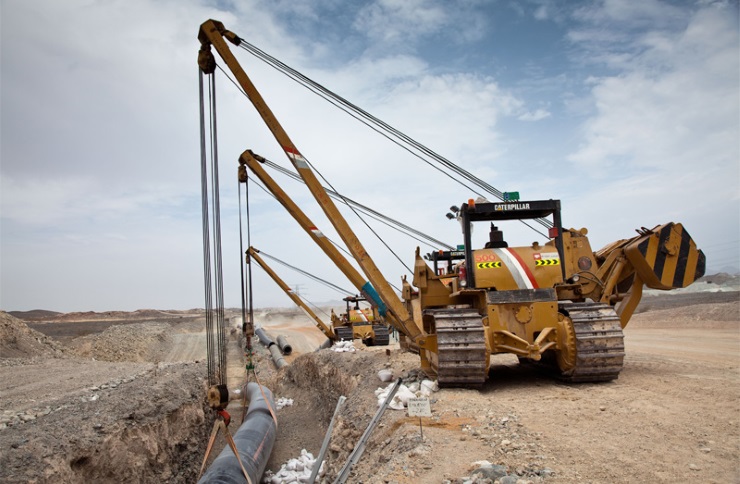
20. Trenchers
Trenchers are heavy construction equipment used for digging channels, especially those for installing drainage, electric cables, and pipes.
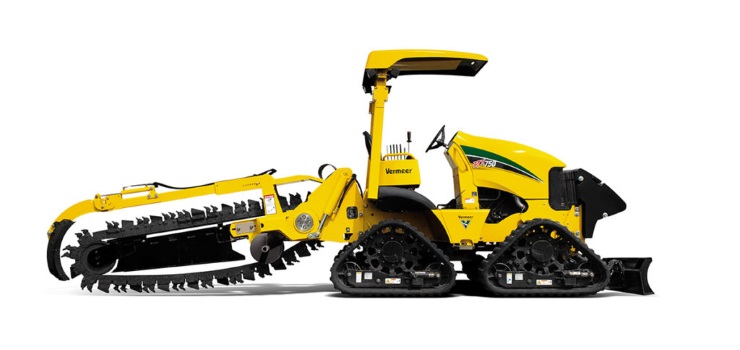
They are mainly classified on the basis of size as follows: chain trencher, wheel trenchers, portable trenchers, rockwheel trencher, and tractor-mount trencher.
21. Compactors
A compactor is a heavy construction equipment used for condensing layers of materials such as soil and wreckages through a process known as compaction.
RELATED: 12 Types of Cranes Used in Construction
Generally powered by hydraulics, compactors function either by applying downward (static) force on the soil surface and compressing the soil particles or by creating a downward (vibratory) force that adds on to the weight of the machine.
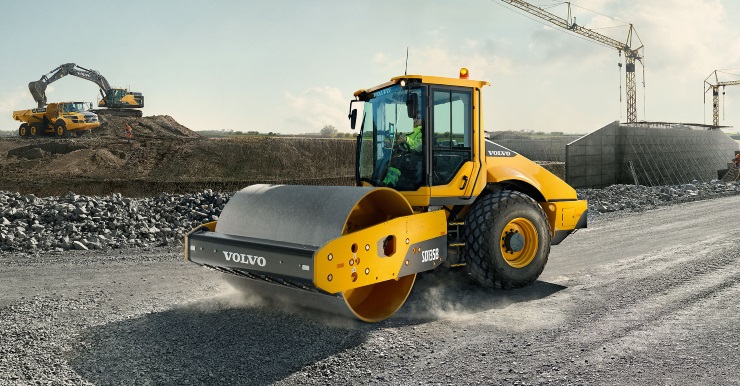
Compactors come in various sizes and styles including smooth wheeled roller, sheepsfoot roller, pneumatic roller, vibrating smooth wheeled rollers, and pneumatic roller.
Smooth wheeled rollers, vibrating smooth wheeled rollers, sheepsfoot roller roller, pneumatic tyred rollers, and tamping rollers are mainly used for heavy soil compaction, while portable vibrating plate compactors, and rammers are used for light soil compacting.
22. Carry Deck Crane
Carry deck cranes are small mobile cranes with a 360-degree revolving platform. The operating platform, or deck, is placed on four wheels and has a control panel and a steering wheel to operate the crane.
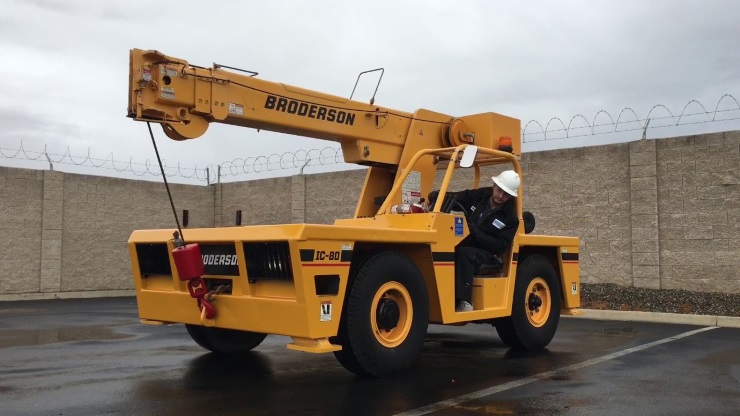
A carry deck crane is best for projects that require lifting and transfer of heavy materials around close locations within a construction site.
23. Boom Lift
This type of machine is used to lift people off the ground to enable them to work at high elevations. A boom lift is fitted with a bucket that can accommodate one or two workers. The bucket is lifted by a crane that is operated by a hydraulic lift system.
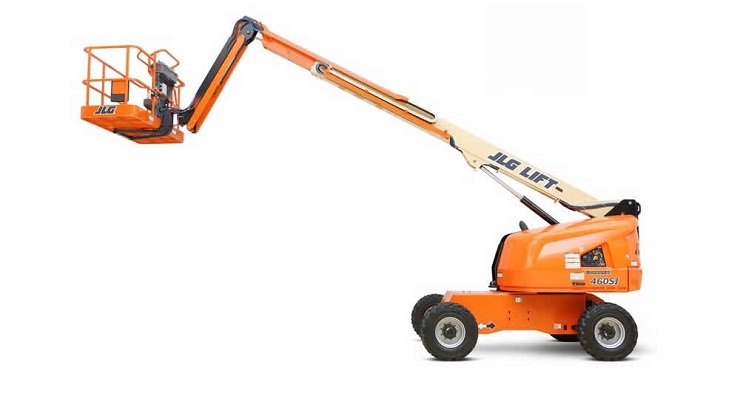
Boom lifts are mainly used by workers undertaking exterior works on tall buildings.
24. Wheel Tractor-Scraper
Used in earthmoving procedures, wheel tractor-scrapers are heavy duty machines that comprise a vertically moving rear hopper with a sharp edge for flattening a surface.
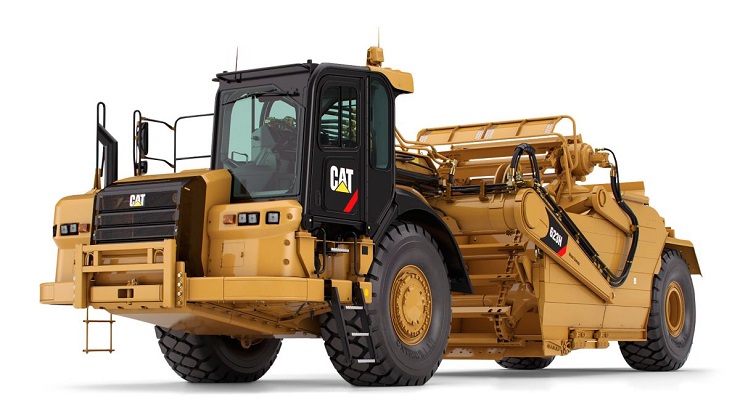
The front end of the machine has a sharp edge to cut soil and a carpenter’s plane for cutting timber. The two gears work together to fill the hopper and move any material evacuated from a cleared site.
25. Single Manlift
Also listed among popular construction equipment names, single manlift is a device used to move workers between floors of a building that is under construction. It uses a bent crane system that employs hydraulic pumps to raise a bucket that fits one worker.
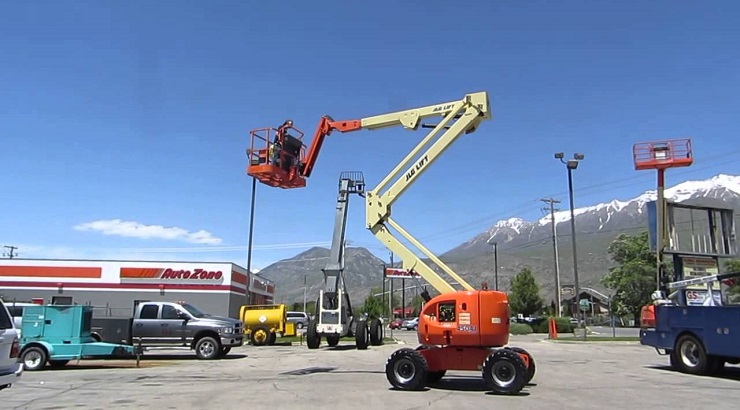
Although most manlifts are fitted with four wheels to allow them to move around sites, some single manlifts are stationary and must be moved around by a trailer.
26. Skid Steer Loader
Skid-steer loaders are small machines that perform numerous jobs on site. The front end of the machine’s operating cabin is a system that allows for the attachment of various devices.
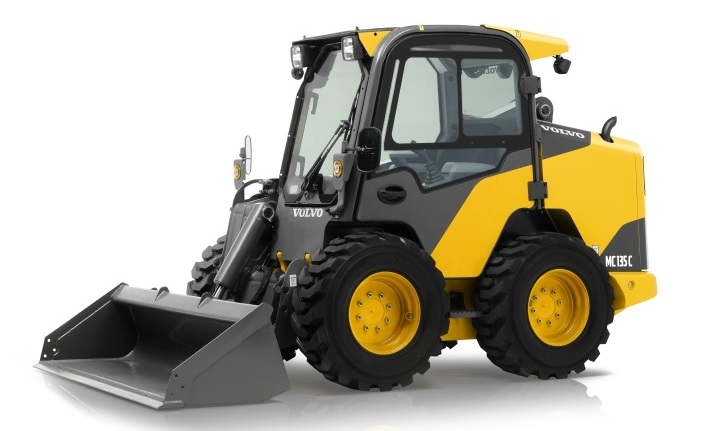
This means a skid-steer loader can be fitted with a bucket, loader or any other tool depending on the job requirements – making it a highly versatile construction equipment.
The small size of the device makes it ideal for operations in constricted areas of a construction site.
27. Cold Planer
A cold planer is a heavy machine that prepares a surface for the pouring of asphalt. When driven over old asphalt, it picks up the material, grinds it and then loads it onto a truck.
Cold planers are important when it comes to recycling old asphalt.
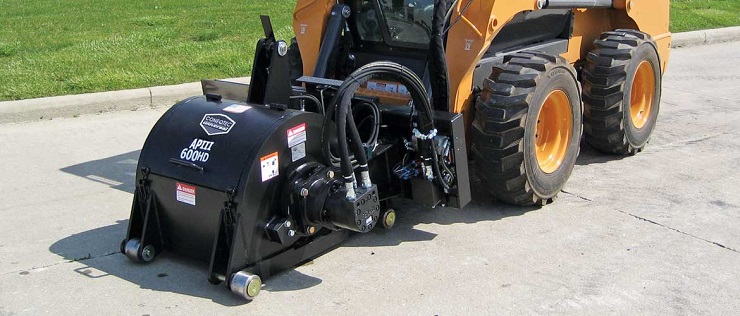
Due to the bulkiness and the rigidity of the machine, it is important to set it up correctly before starting a job to minimise shifting while grinding.
28. Scissor Lift
Like a boom lift, a scissor lift is used to help people work on elevated projects. It has a bucket that can accommodate one or two workers.
Unlike boom lifts that use hydraulic lift systems to move the bucket, scissor lift buckets are raised using a system of jacks.
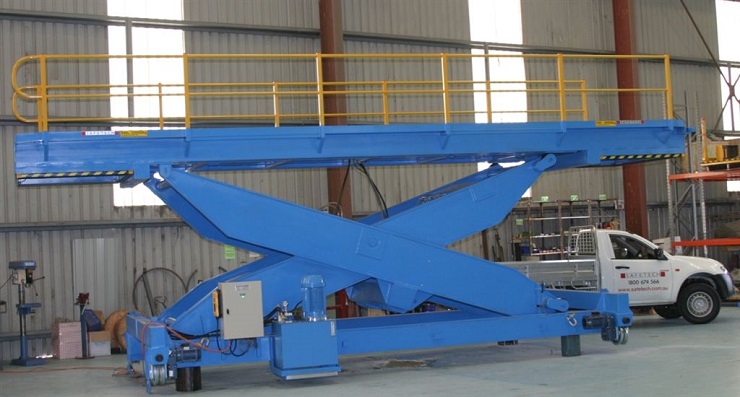
Electric scissor lifts are ideal for projects requiring quiet works while the noisy engine-powered lifts are great for projects that demand rugged terrain mobility.
29. Articulated Hauler
Articulated hauler, also known as articulated dump truck or dump hauler, is a heavy-duty dump truck that moves loads over very rough terrains. The machine is fitted with a pivot joint that gives it increased mobility to move loads around tight turns.
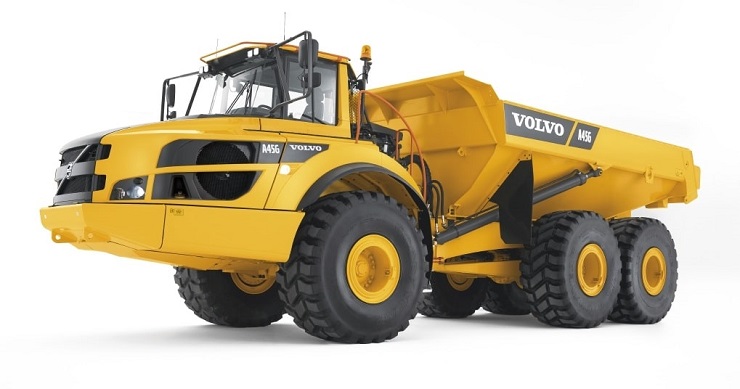
The articulated hauler is equipped with a control centre where the driver sits and a container for carrying loads. Most dump haulers are 4×4 drive for easy access to difficult sites.
30. Drum Roller
Drum rollers are mainly used to press soil, asphalt, or other loose materials on road construction sites. The machines come in two varieties: smooth rollers and padfoot rollers.
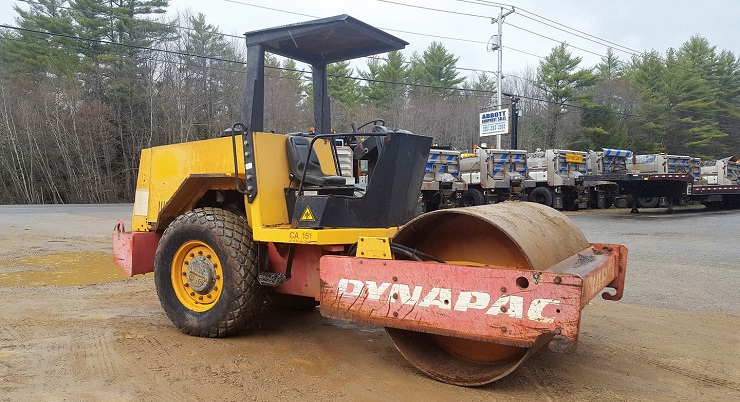
Smooth rollers deliver static pressure and vibration to compress loose materials. Padfoot rollers – also known as sheepsfoot rollers – also deliver static pressure and vibration, and a manipulative force that facilitates uniform compaction of loose material.
31. Compact Track and Multi-Terrain Loader
These are small machines that are used to transport and load materials. Both are fitted with front metal plate scoops that lift and break apart huge loads.
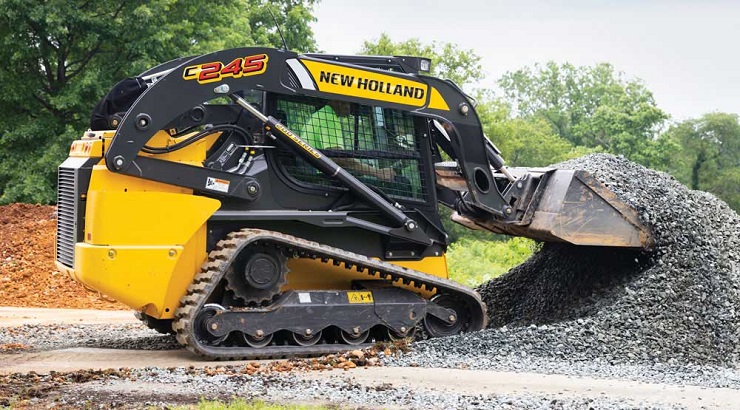
The difference between the two is that a compact track loader is rugged and exerts a lot of pressure on the ground, while multi-terrain loader is less rough and is designed to work on delicate surfaces.
32. Dragline Excavator
This is a heavy equipment that has a long boom with a digging bucket suspended at the end for deep excavation projects. The bucket is controlled using a system of ropes and chains.
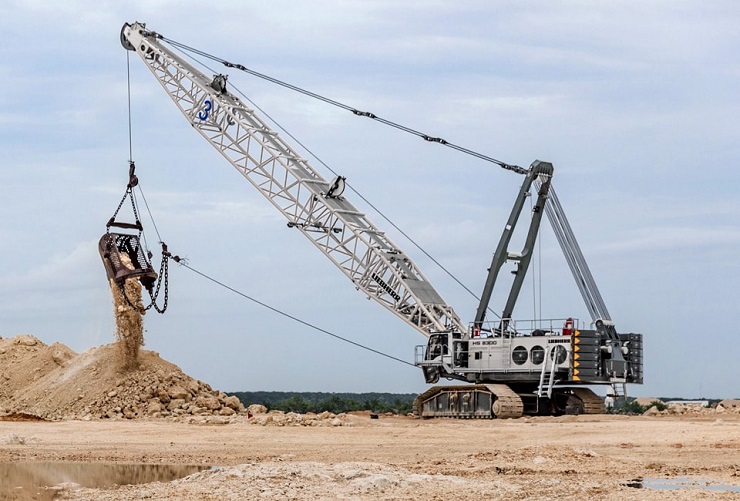
Some dragline excavators are small and are easily moveable to a construction site, while others – weighing thousands of tonnes – can only be assembled on site.
33. Tower Crane
Tower cranes are powerful lifting machines fixed to the ground during the construction of skyscrapers. Typical tower cranes have a maximum unsupported height of 80 metres or higher if tied into the building as the structure rises around the crane.
A standard tower crane has lifting capacity of 20 tonnes.
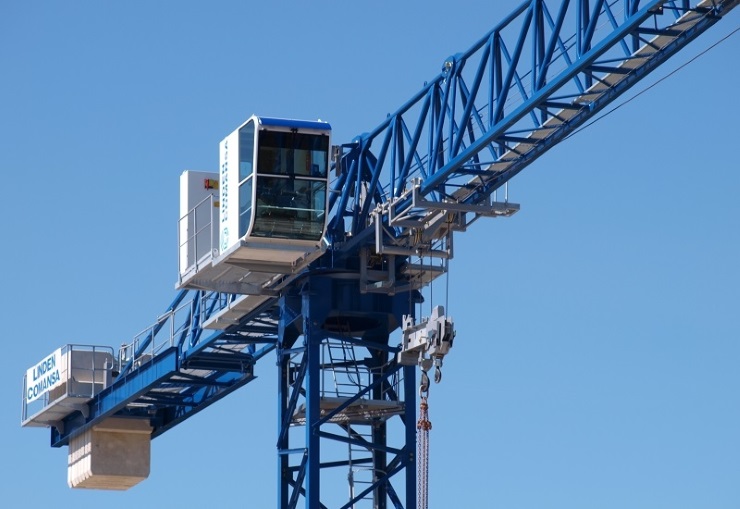
Tower cranes are built along with a building, and rise alongside it. They are fitted using strong concrete base and anchored by large bolts that are easily dismantled in the end.
Tower cranes are the most visible types of heavy construction equipment on site.
34. Telescopic Crane
Telescopic cranes are a form of heavy cranes equipped with a large boom in which several hydraulic cylinders are fitted – one inside the other – allowing the boom to increase or reduce its length, just like a telescope.
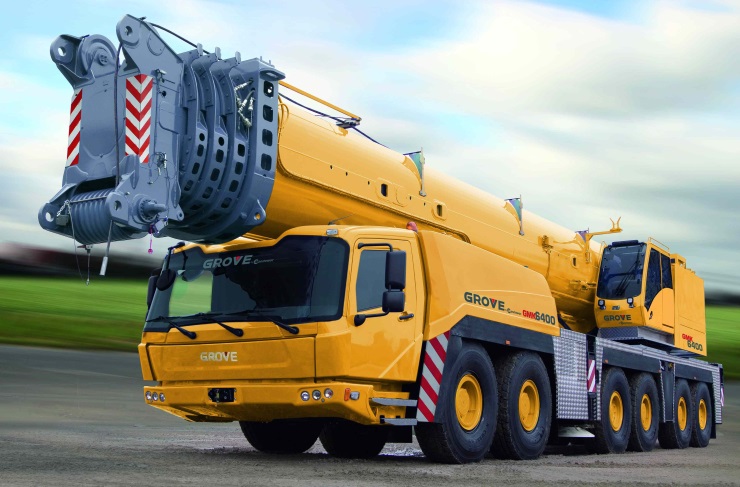
Most telescopic cranes are mounted on tracks to allow movement to and from different sites. This makes them ideal for short-term jobs such as installation of signal masts.
35. Crawler Crane
Closing our list of popular construction equipment is crawler crane – a machine designed for heavy load transportation at a construction site.
Instead of wheels, crawlers are built on an undercarriage fitted with a pair of rubber tracks.
Although this design limits the crawler’s turning capacity, it helps the machine to operate on soft soils without the risk of sinking.
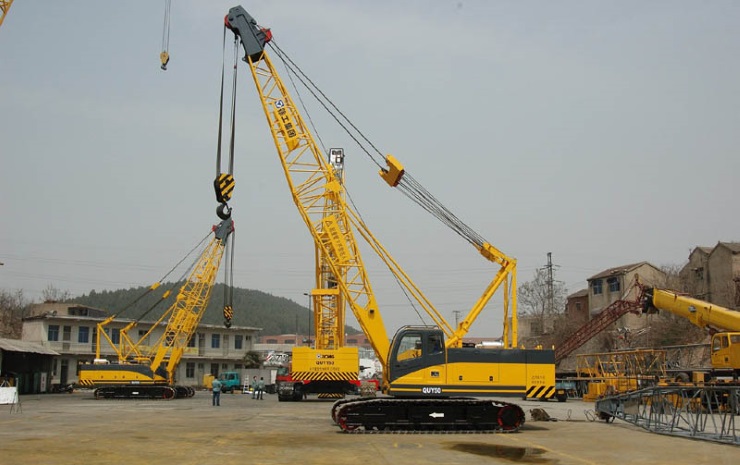
Some crawler cranes come with a telescopic arm that allows for increase or reduction of size, which enhances their ability to operate in various terrains.
Due to their enormous sizes, crawler cranes are perfect for long-term projects.







